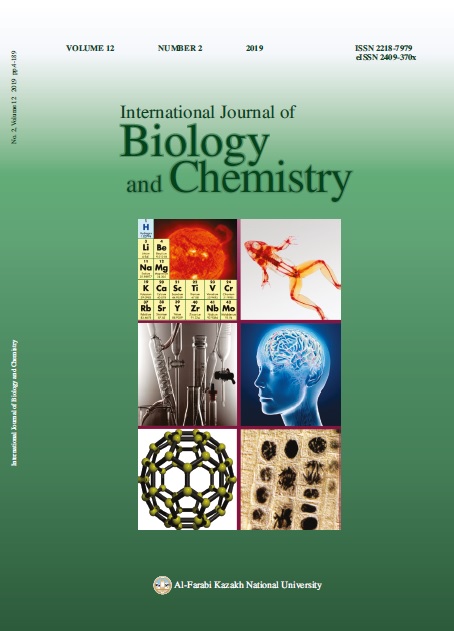Comprehensive proteomic analysis of camel milk-derived extracellular vesicles
DOI:
https://doi.org/10.26577/ijbch-2019-v2-12Abstract
Extracellular vesicles were recovered by optimized density gradient ultracentrifugation from milk of Camelus (C.) dromedarius, C. bactrianus and hybrids reared in Kazakhstan, visualized by transmission electron microscopy and characterized by nanoparticle tracking analysis. Purified extracellular vesicles had a heterogeneous size distribution with diameters varying between 25 and 170 nm, with average yield of 9.49 x 108 – 4.18 x 1010 particles per milliliter of milk. Using a comprehensive strategy combining classical and advanced proteomic approaches an extensive LC-MS/MS proteomic analysis was performed of EVs purified from 24 camel milks (C. bactrianus, n=8, C. drmedarius, n=10, and hybrids, n=6). A total of 1,010 unique proteins involved in different biological processes were thus identified, including most of the markers associated with small extracellular vesicles, such as CD9, CD63, CD81, HSP70, HSP90, TSG101 and ADAM10. Camel milk-derived EV proteins were classified according to biological processes, cellular components and molecular functions using gene-GO term enrichment analysis of DAVID 6.8 bioinformatics resource. Camel milk-derived EVs were mostly enriched with exosomal proteins. The most prevalent biological processes of camel milk-derived EV proteins were associated with exosome synthesis and its secretion processes (such as intracellular protein transport, translation, cell-cell adhesion and protein transport, and translational initiation) and were mostly engaged in molecular functions such as Poly(A) RNA and ATP binding, protein binding and structural constituent of ribosome. Proteomic studies of camel milk and sub-fractions thereof, such as casein, whey, or the milk fat globule membrane (MFGM) have revealed a plethora of bioactive proteins and peptides beneficial for developing immune and metabolic systems (Casado et al., 2008; Kussmann and Van Bladeren, 2011). By contrast, camel milk-derived EVs are still a largely uncharted proteomic terrain, although we know that milk-derived EVs carry cell originspecific cargo and transport both bioactivity and information between cells (de la Torre Gomez et al., 2018).
Downloads
How to Cite
Issue
Section
License
ааа





